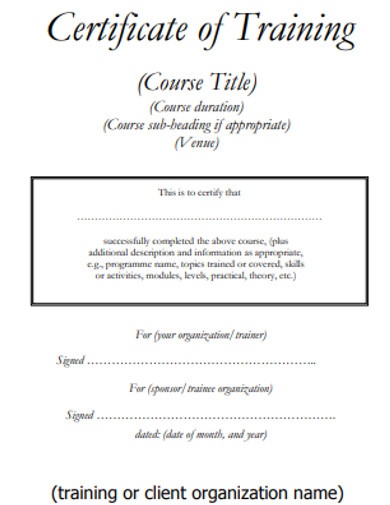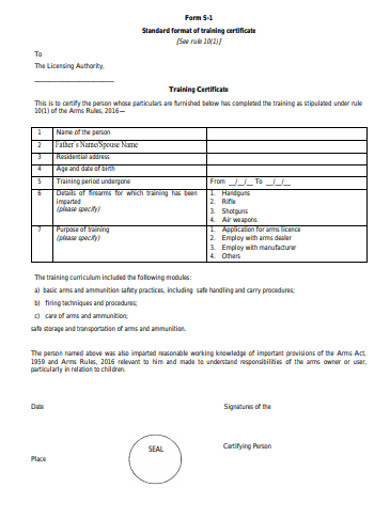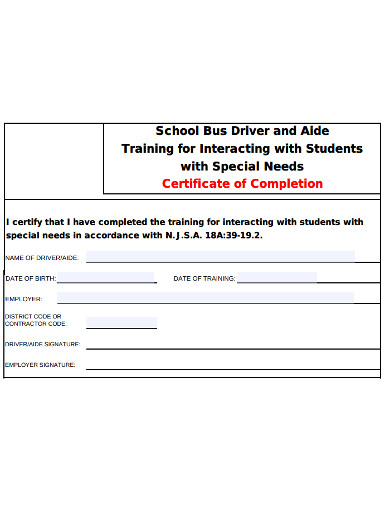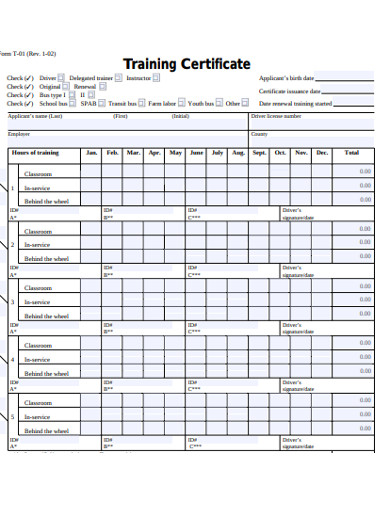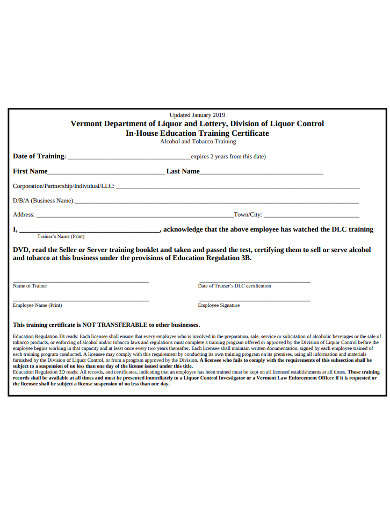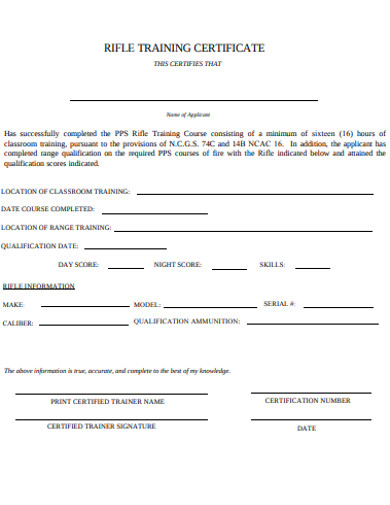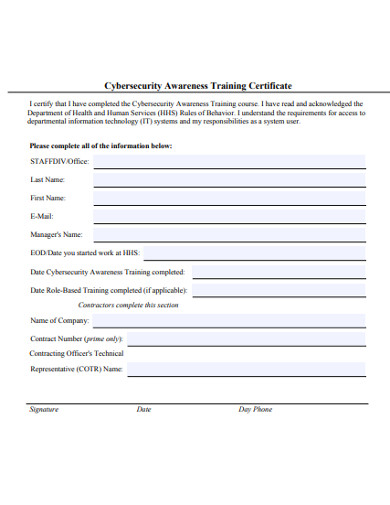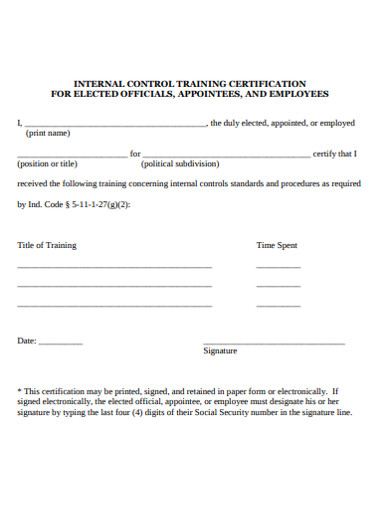22+ Training Certificate Examples to Download
In any organization or firm, a certain amount of training is required to be provided to their new candidates or existing employees related to certain existing or new functions. The purpose of these training programs is to educate the person with certain instructions and knowledge that will help them work more efficiently as well as effectively. Once the employee or candidate reaches completion then they are usually certified for completing their course.
Therefore the institution issues a training certificate to award a candidate for being able to complete their course without a hitch. Given below are 18+ training certificates examples and templates.
Training Certificate Examples & Templates
1. Safety Training Certificate Template
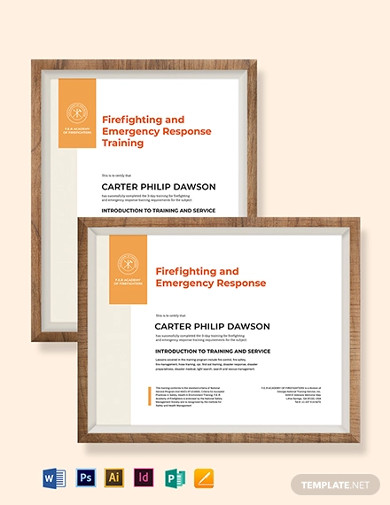
A certificate is issued by any training institute to certify that the trainee has successfully completed their training and are ready for practical experience. This template has been issued by the F.E.R academy of firefighters to be distributed among all students who have completed their course.
2. Service Training Certificate Template
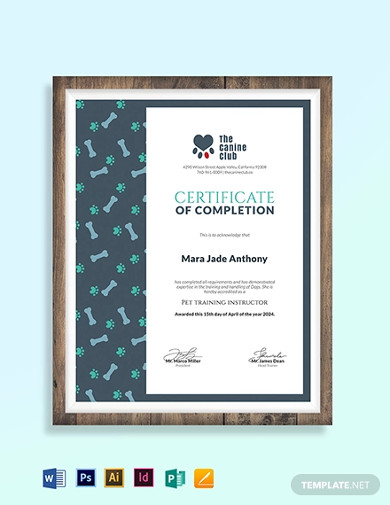
The canine club have issued this certificate of completion that is to be given to all pet instructors who have completed their training with this institute. Use this template as reference to create your own.
3. Management Training Certificate Template
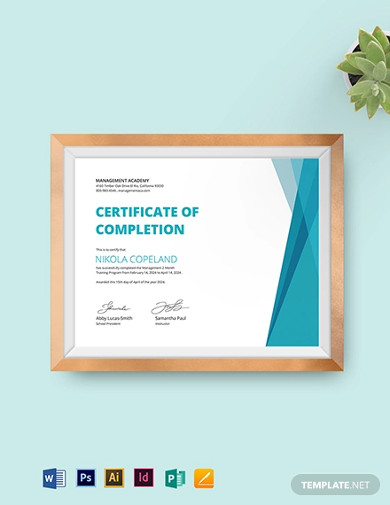
A management academy usually aims at educating their students about business and commerce. Their courses last for not more than two years and usually offer certificates on completion of the courses offered by them.
4. Company Training Certificate Template
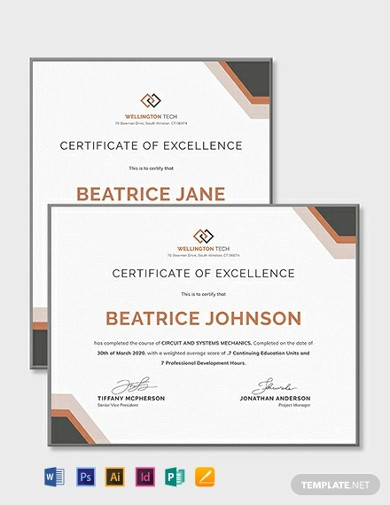
A certificate of excellence are usually gifted to a student who has demonstrated outstanding performance in their respective field. It is usually awarded by a higher commission or administration to certify a person’s hard work. This sheet can be used by you to print your own certificate.
5. Rugby Training Certificate Template
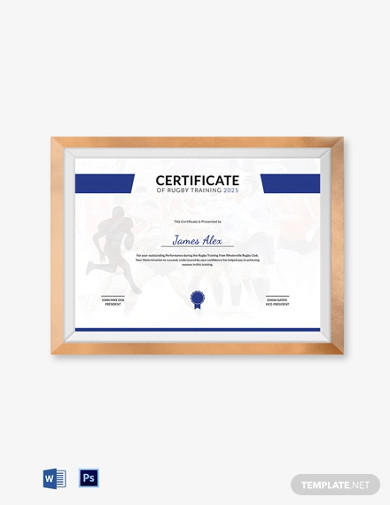
Rugby is a sport that first originated in England and is considered as a form of football where ball is to be carried by hand. There are training held by various sports clubs to teach young athletes about how they can learn more about the game. This certificate is used to signify the completion of training of the young rugby athletes.
6. Basketball Training Certificate Template
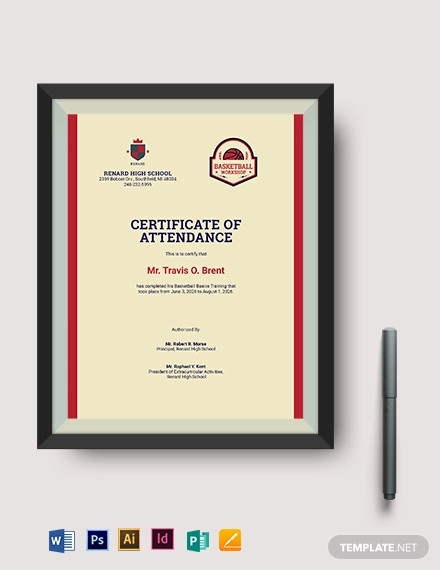
7. Fitness Training Certificate Template
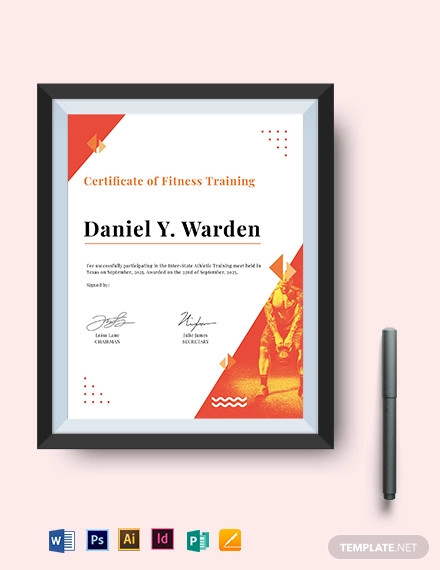
8. Funny Sports Training Certificate Template
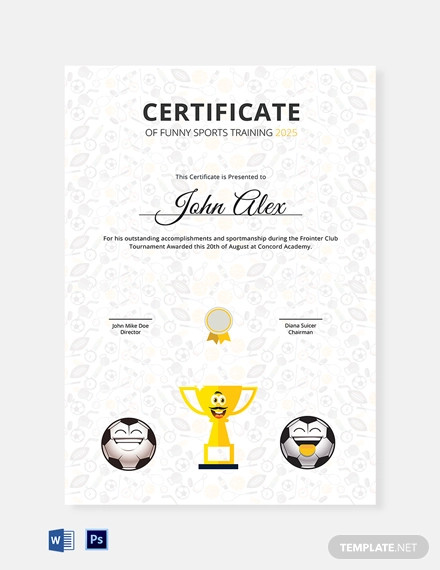
9. Training Attendance Certificate Template

10. Security Training Certificate Template
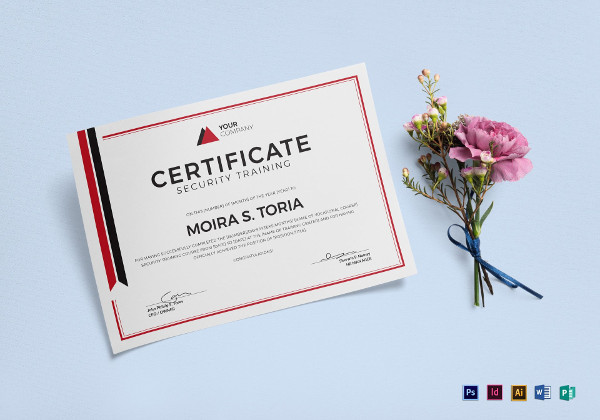
This card is well designed with the logo of the company placed on top allowing the company to state that it was issued by them. The certificate has been issued by a security training institution and signed by the administrative board in order to attest it.
11. Prize Winner Training Certificate Template
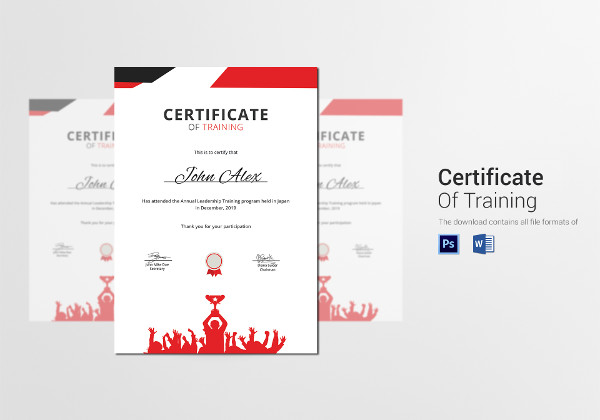
It is an illustratively decorated certificate has been issued for the purpose of acknowledging the candidates for participating in the training program. If you are in search for a certificate to refer to when creating one for your company then this template might be able to help you.
12. Vocational Training Certificate Template
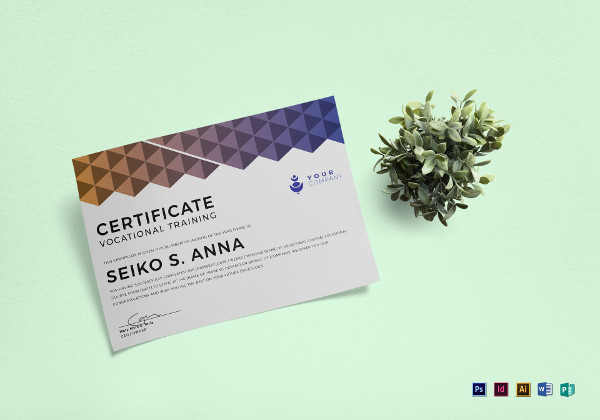
Vocational training refers to providing training related to the work that is to be done by the candidate. The main purpose of these trainings is to provide the candidate with instruction and then certify their participation in the program. This certificate can be used by institutes specializing in vocational training for the purpose of distribution among students.
13. Free Nurse Training Certificate Template
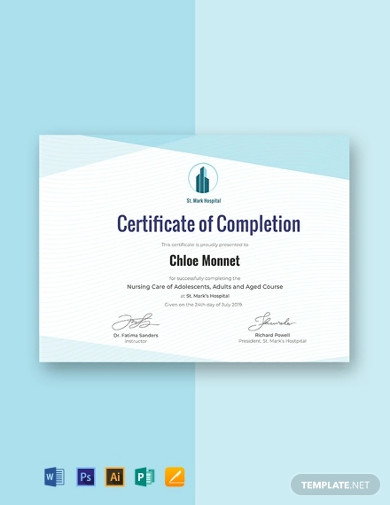
The St. Mark’s hospital had held a nursing care of adolescents, adult and aged course for students interested in pursuing nursing as a career. This is a certificate that has been printed to for the student to state that they have successfully reached the end of their course.
14. Free Hotel Training Certificate Template
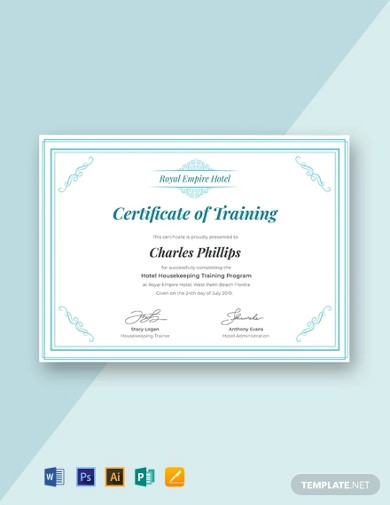
The hospitality managing department of hotel at times hold training to teach their workers on how to better serve their guests. The Royal empire hotel has issued this certificate for the purpose of a housekeeping training course that was held by them.
15. Free Hospital Training Certificate Template
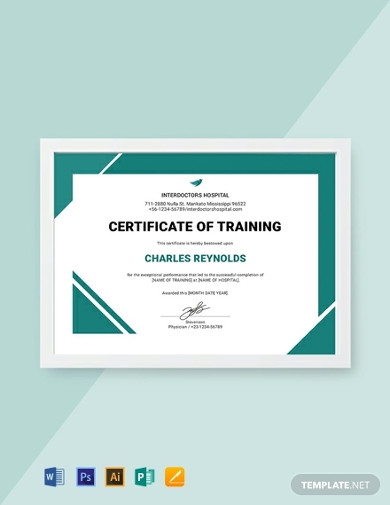
This certificate consists of abstract designs and has been used to certify the completion of training course in a hospital. If you are in search of a certificate that can be used not only for a hospital but other organizations as well then use this template.
16. Sample Training Certificate Example
In this template, a format has been provided for a certificate that will be used to state that a training course has been completed by the candidate. It consists of guidelines on how a person can prepare their own certificate for their firm.
17. Standard Training Certificate Example
Certain times the certificate may not be presented in a decorative card instead it may be presented in the form of a standardized document. Given here is a sample of a training certificate that has been generated by an arms training institute.
18. Bus Driver Training Completion Certificate
The state of New Jersey had held a training for school bus drivers and aide to train them on how they can deal with students with special needs. The certificate has been printed to certify that the person has successfully finished their training course.
19. Formal Training Certificate Example
This training certificate that has been issued by the California training department is used to document the entire training procedure. The certificate states the hours of training that was provided by the institution along with certain instructions that were provided during the training process.
20. Simple Training Certificate Example
The sample certificate provided here is used not only to certify participation but to also provide the participant a test based on the training that was provided to them. The Vermont department of liquor and lottery have generated this sheet.
21. Training Certificate in PDF
Private protective service board generated a sheet that will help state that the person has completed their PPS riffle training course. The form states the location the training was held in along with the score of the person.
22. Awareness Training Certificate Example
This sheet is to validate the fact that the candidate had attended a cybersecurity awareness training course. This course was held by the department of health and human services regarding the rules of behavior.
23. Internal Control Training Certificate Example
This form may be either issued electronically or may be printed for an internal training course that was held elected officials.



